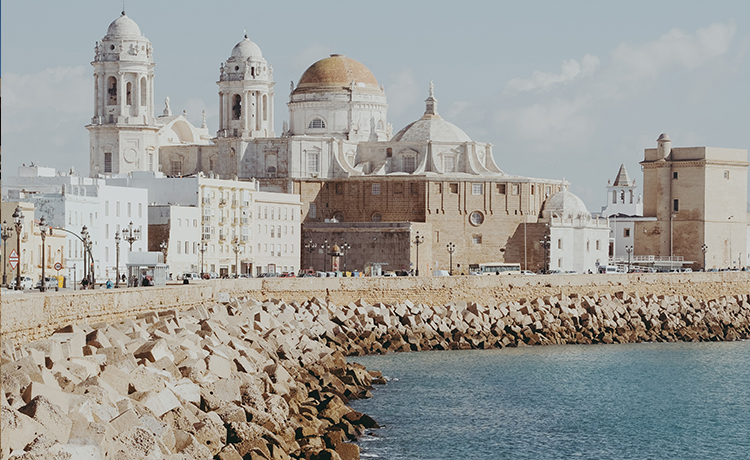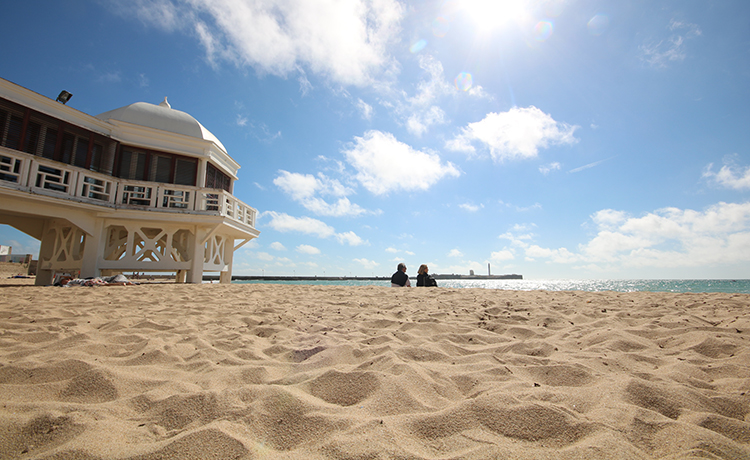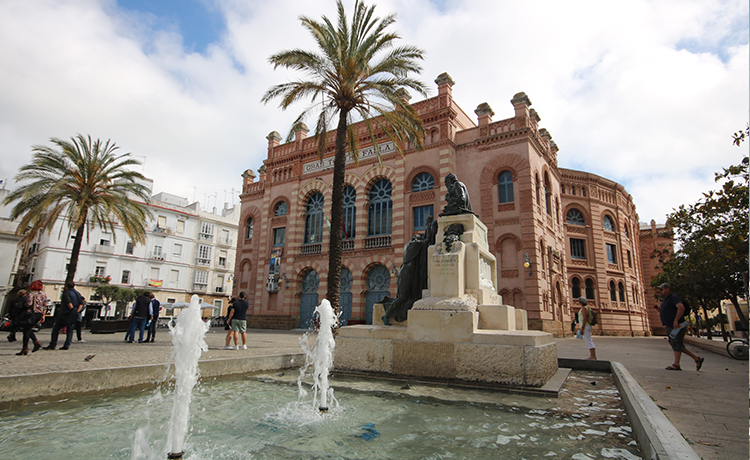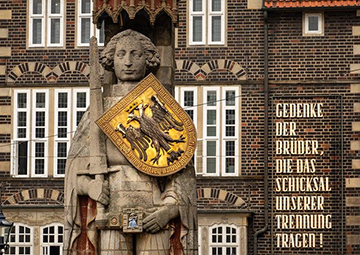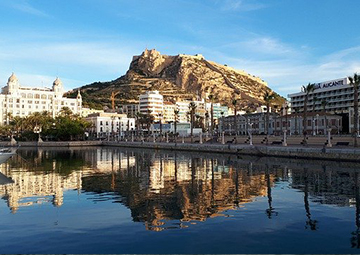In the centre of the city, you can visit the historical museum of Cadiz and the Tavira Tower, one of the emblematic oratories of Cadiz (San Felipe Neri), a national monument where the liberal constitution of 1812 was discussed. A highlight is the ascent of the tower, from which you have a panoramic view of the cathedral and the museum where the table where the first Spanish Constitution was signed stands.
Founded in the 1970s, the Museum of Fine Arts and the Archaeological Museum of the City combine to present a fascinating mix of artifacts on three floors. The main museum of the city, the Museo de Cadiz, displays archaeological artifacts, fine arts, and ethnography, while the Museo de las Cortes is a place to learn about the constitution of Cadiz. From the tree-lined Plaza de Mina you can visit the Archaeological and Art Museum of Cadiz for an interesting Phoenician exhibition and from Plaza de San Francisco you can also visit the homonymous church.
In the Plaza San Juan Dios stands the neoclassical building of the Town Hall of Cadiz overlooking the nearby harbour. In the port square you can also see the beautiful buildings of the Municipality of Cadiz and the church of San Juan Dios. Before going to the next attraction in Cadiz, the castle of San Sebastian, we recommend a walk along Campo del Sur’s Sea front promenade.
Playa de la Caleta, the smallest beach in the city of Cadiz is located between two ancient fortresses, Castillo Santa Catalina, and Castillo San Sebastian. The most popular beach of Cadiz is the long and wide Playa Victoria. It is one of the most photographed beaches in the city and popular with locals and fishers at sunset.
Founded in the 1970s, the Museum of Fine Arts and the Archaeological Museum of the City combine to present a fascinating mix of artifacts on three floors. The main museum of the city, the Museo de Cadiz, displays archaeological artifacts, fine arts, and ethnography, while the Museo de las Cortes is a place to learn about the constitution of Cadiz. From the tree-lined Plaza de Mina you can visit the Archaeological and Art Museum of Cadiz for an interesting Phoenician exhibition and from Plaza de San Francisco you can also visit the homonymous church.
In the Plaza San Juan Dios stands the neoclassical building of the Town Hall of Cadiz overlooking the nearby harbour. In the port square you can also see the beautiful buildings of the Municipality of Cadiz and the church of San Juan Dios. Before going to the next attraction in Cadiz, the castle of San Sebastian, we recommend a walk along Campo del Sur’s Sea front promenade.
Playa de la Caleta, the smallest beach in the city of Cadiz is located between two ancient fortresses, Castillo Santa Catalina, and Castillo San Sebastian. The most popular beach of Cadiz is the long and wide Playa Victoria. It is one of the most photographed beaches in the city and popular with locals and fishers at sunset.
Today is one of the most popular attractions of Cadiz, where you can admire the fortresses that surround the architecture and interior of the city, as well as events, exhibitions, and concerts. One of them is the cathedral of Santa Cruz, where the two towers of the cathedral are open to the public and offer splendid views of Cadiz Skyline, while the façade can be admired from the sunny terrace of Plaza de la Cathedral.
As a charming Andalusian city, Cadiz does not lack in attractions. From the Cathedral to the Museo Catedralicio, there is only one thing to do in Cadiz. A great museum is one of the best places to visit the city during your Andalusian holiday.
Here you will find the best activities, the best restaurants, and hotels as well as insider information to help plan your visit to Cadiz in Andalusia. We tell you about twenty top activities in Cadiz Ancient Gadir are one of the oldest European cities on the Moroccan peninsula bordering 3,000 years of history, breath-taking landscapes, and rich culture.
The 28 km long Playa Victoria, which stretches along the entire west side of Cadiz, is rated as Europe's best urban beach and the best of all kinds in Spain. La Caleta beach is a supervised beach where two castles in Cadiz form a sea wall to protect the beach from strong waves. Cadiz has a Roman theatre, the oldest in Spain and one of the largest with a capacity of 20,000 people.
As a charming Andalusian city, Cadiz does not lack in attractions. From the Cathedral to the Museo Catedralicio, there is only one thing to do in Cadiz. A great museum is one of the best places to visit the city during your Andalusian holiday.
Here you will find the best activities, the best restaurants, and hotels as well as insider information to help plan your visit to Cadiz in Andalusia. We tell you about twenty top activities in Cadiz Ancient Gadir are one of the oldest European cities on the Moroccan peninsula bordering 3,000 years of history, breath-taking landscapes, and rich culture.
The 28 km long Playa Victoria, which stretches along the entire west side of Cadiz, is rated as Europe's best urban beach and the best of all kinds in Spain. La Caleta beach is a supervised beach where two castles in Cadiz form a sea wall to protect the beach from strong waves. Cadiz has a Roman theatre, the oldest in Spain and one of the largest with a capacity of 20,000 people.
Cadiz is a city of magic, like Cracow or Dublin, to set the mind on fire at a turn of a corner. ... The eye is continually fed, the imagination stirred, by a train of spectacles as charming as if they had been contrived. Honor Tracy
At the top of 10 staircases and 170 steps a roof terrace offers the best views of Cadiz to the west, the castle of San Sebastian to the south and the luminous dome of the Cathedral. The view from the Paseo Fernando Quinones in Cadiz, a long stone dam that runs along the northwest edge of the city, is worth seeing, and you can pause to let your legs dangle over the walls and watch the Atlantic Ocean.
On a rooftop level with the best view of the city, west of the castle of San Sebastian, is the Camera Obscura tower, installed in 1994. We recommend you climb to the top of the tower, as the dark chamber is one of the main attractions in Cadiz.
You can walk along Avenue Campo del Sur will take you to the entrance of Paseo Fernando Quinones, a path that leads to the next attraction of Cadiz, the Castle of San Sebastian. After the plundering of Cadiz by anglo-Dutch troops, the King of Spain decided to build a fortress to strengthen one of the city's most vulnerable areas.
On a rooftop level with the best view of the city, west of the castle of San Sebastian, is the Camera Obscura tower, installed in 1994. We recommend you climb to the top of the tower, as the dark chamber is one of the main attractions in Cadiz.
You can walk along Avenue Campo del Sur will take you to the entrance of Paseo Fernando Quinones, a path that leads to the next attraction of Cadiz, the Castle of San Sebastian. After the plundering of Cadiz by anglo-Dutch troops, the King of Spain decided to build a fortress to strengthen one of the city's most vulnerable areas.




